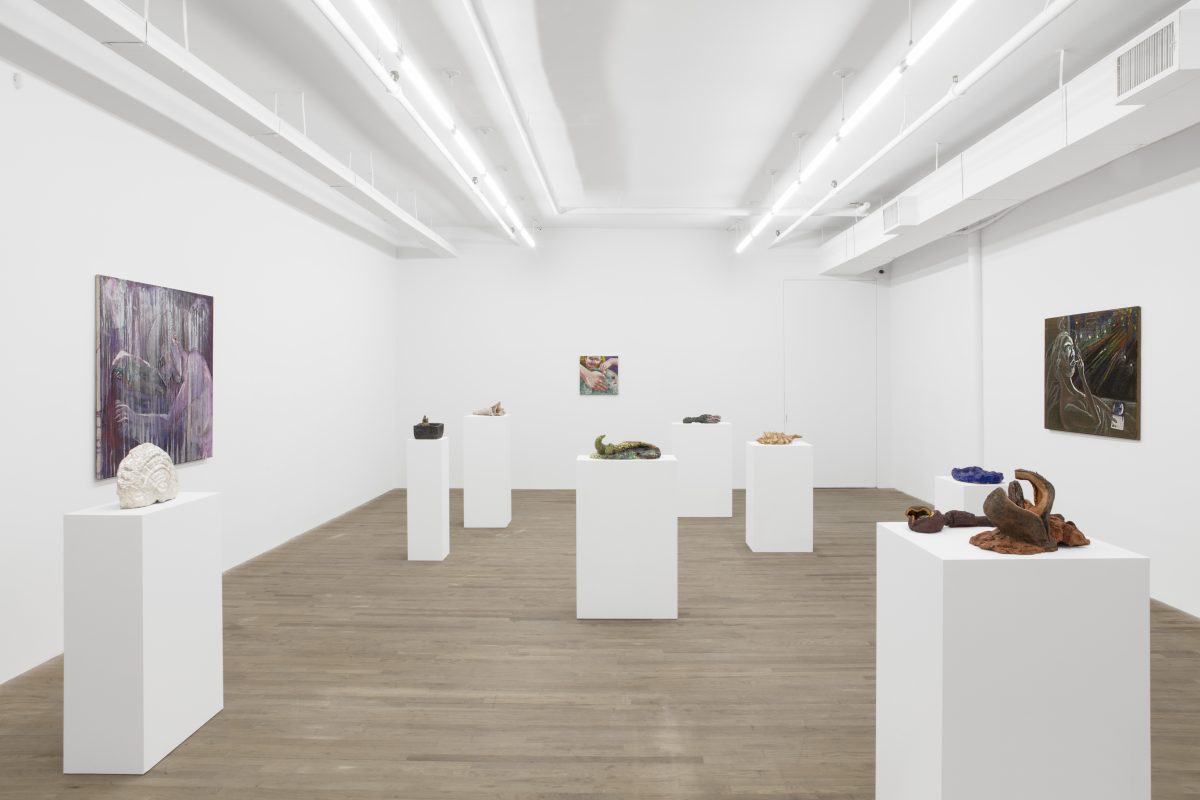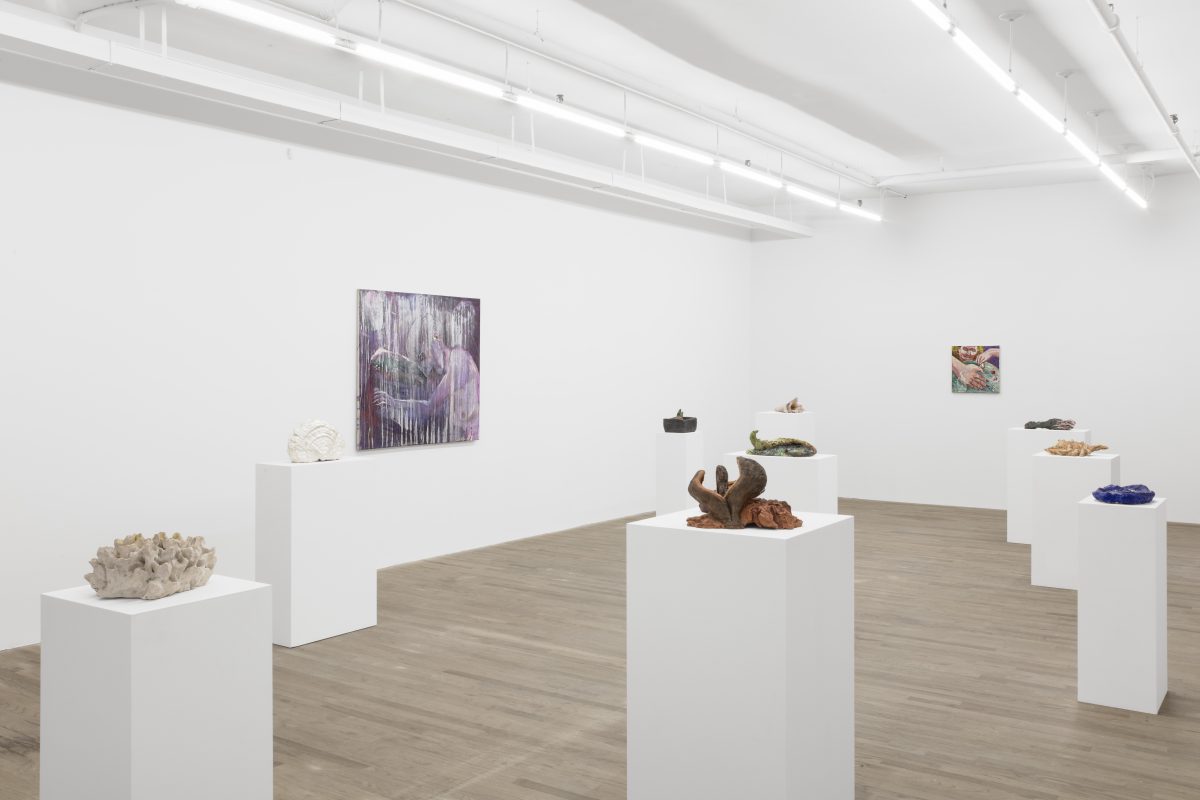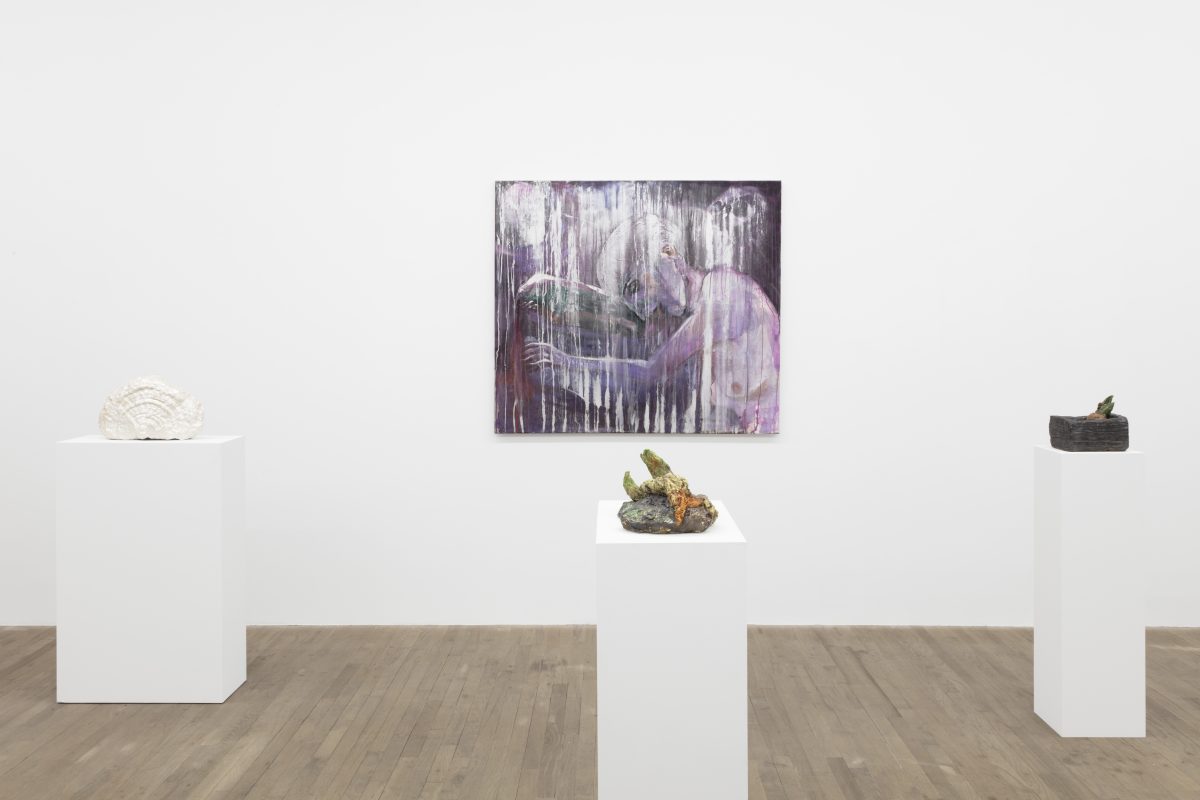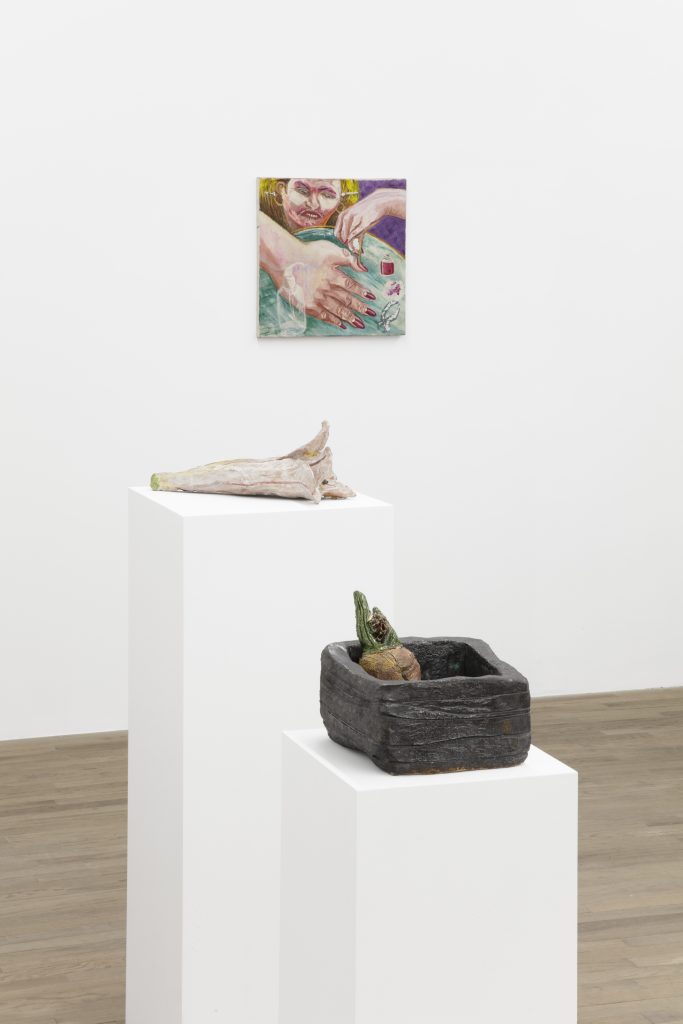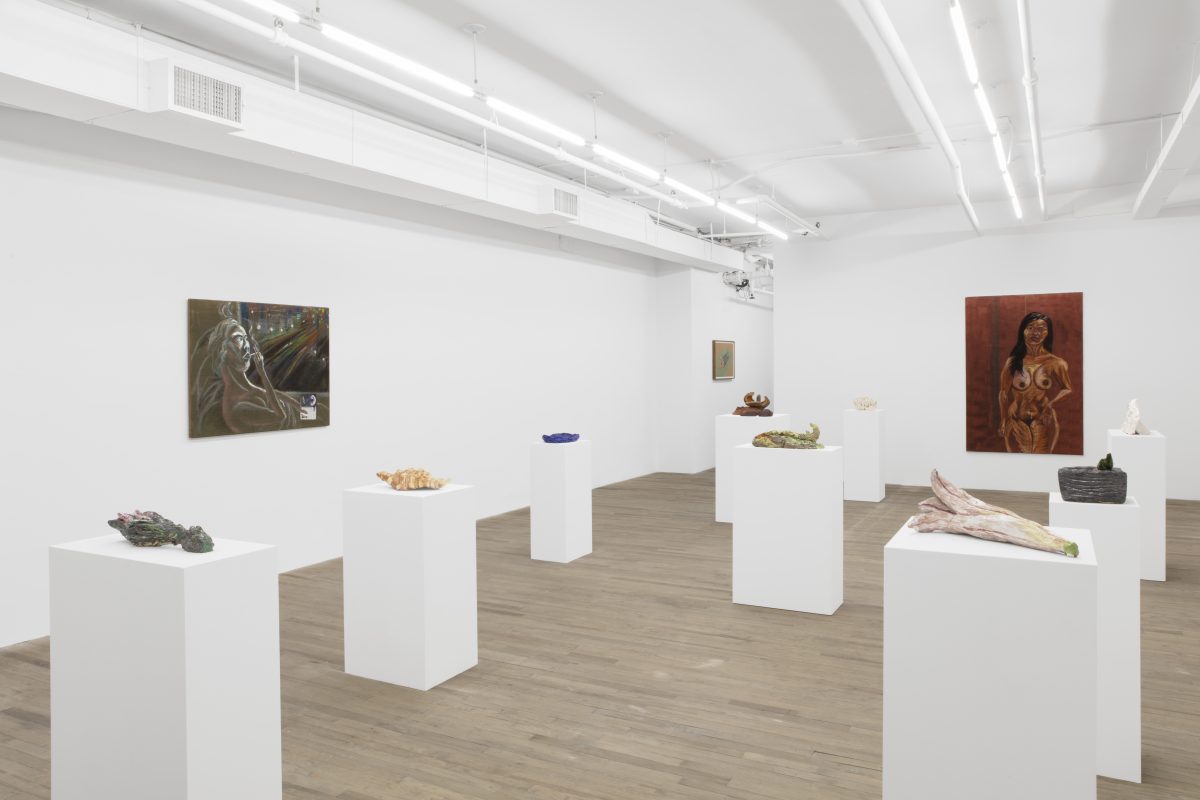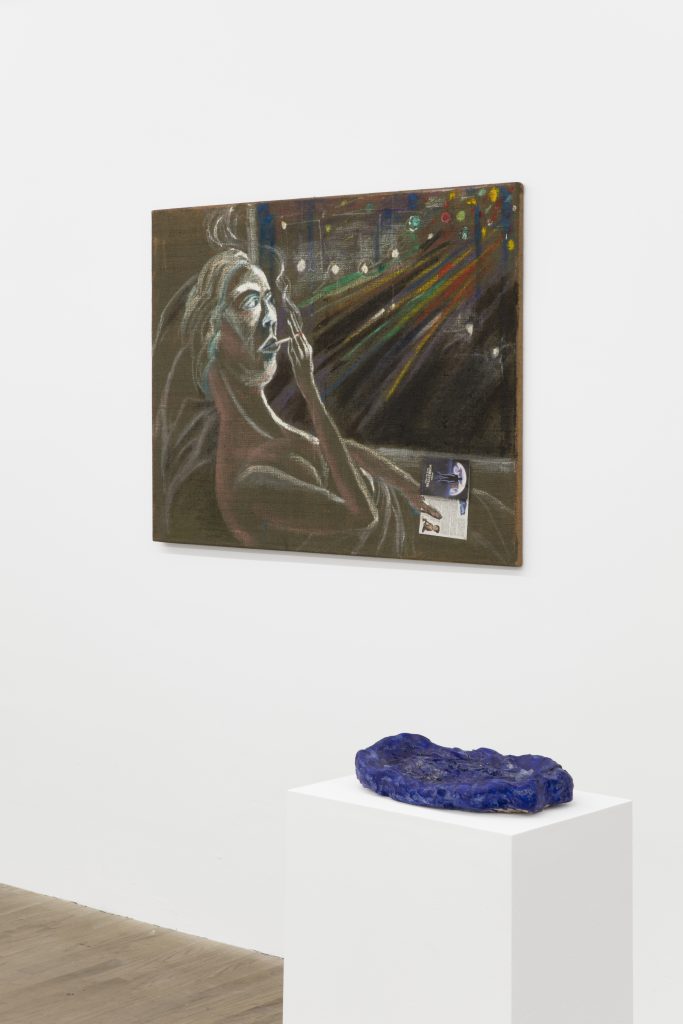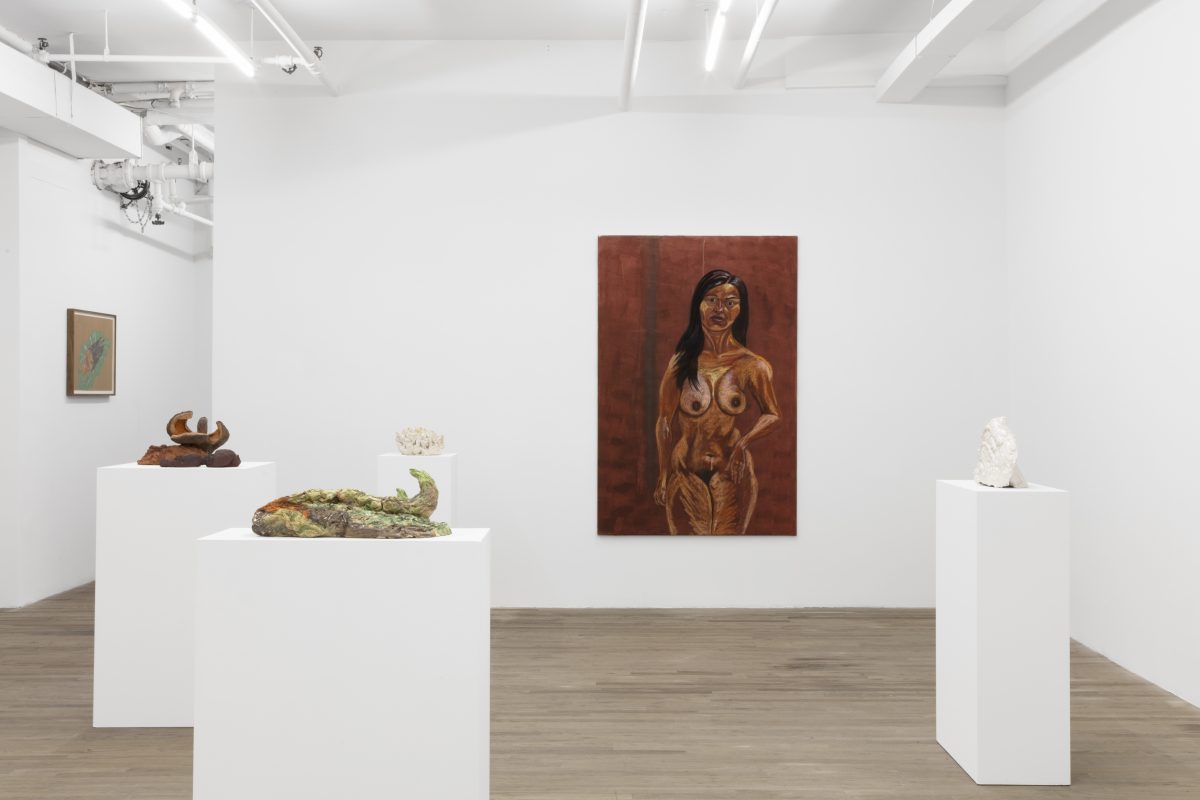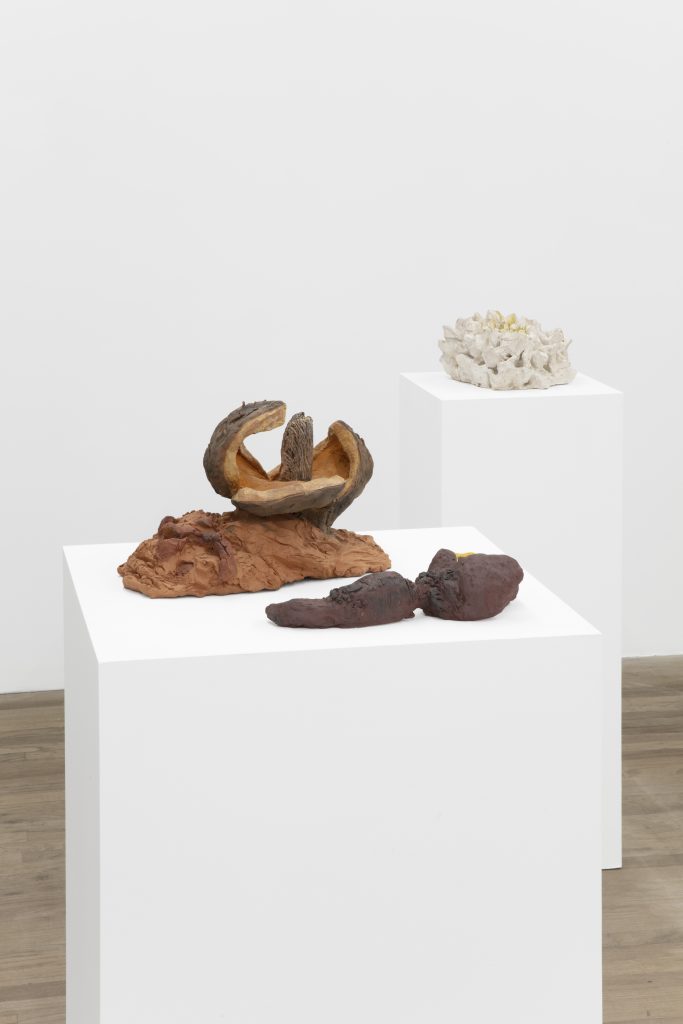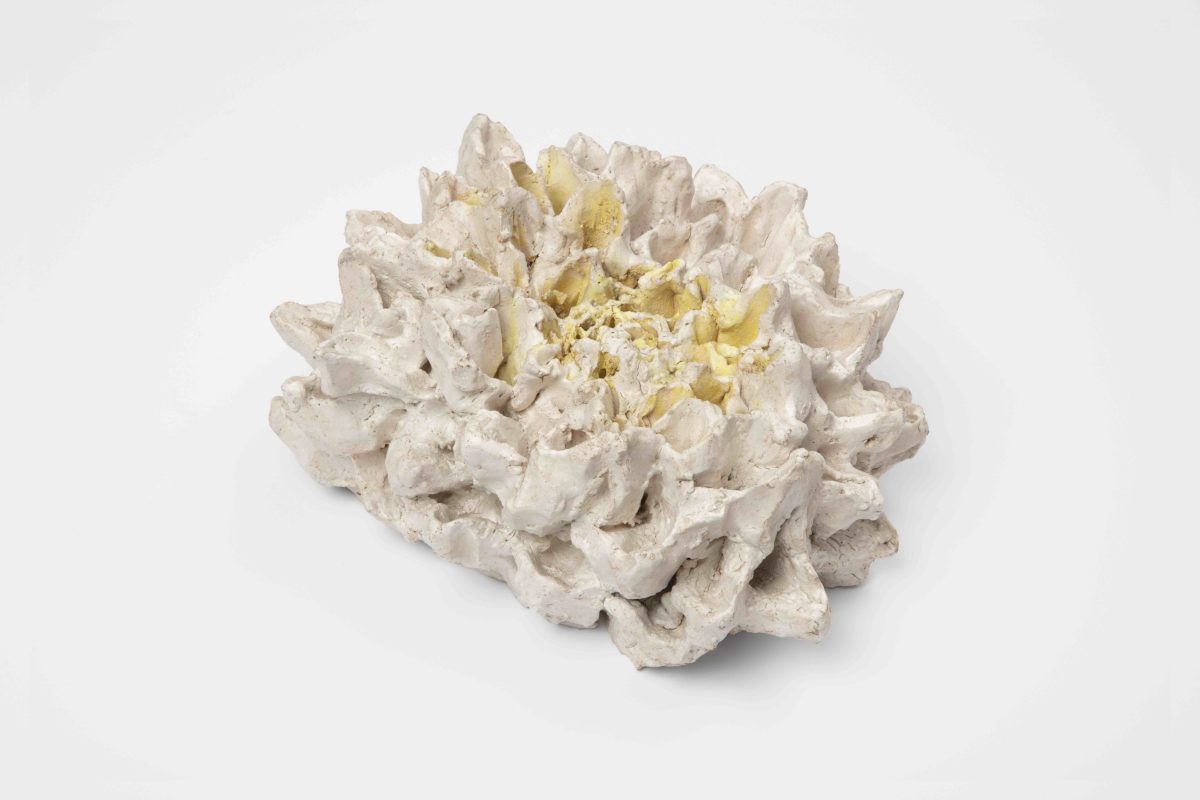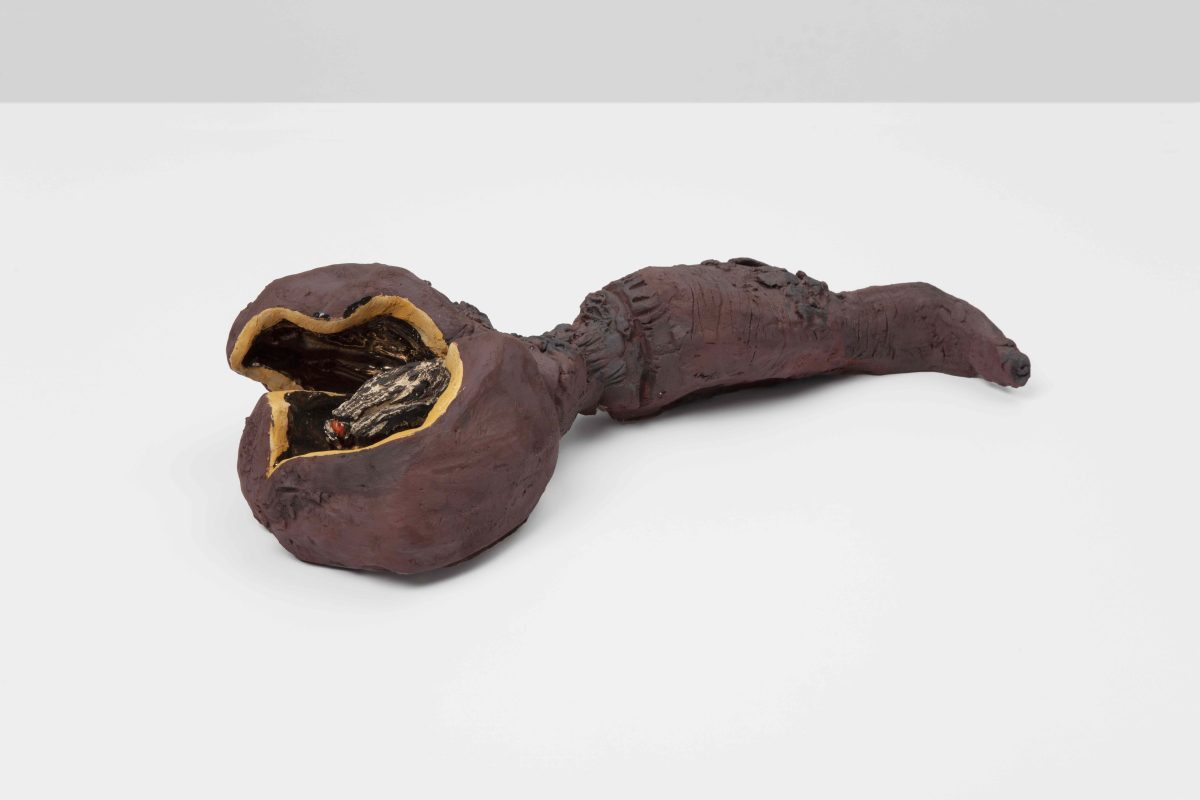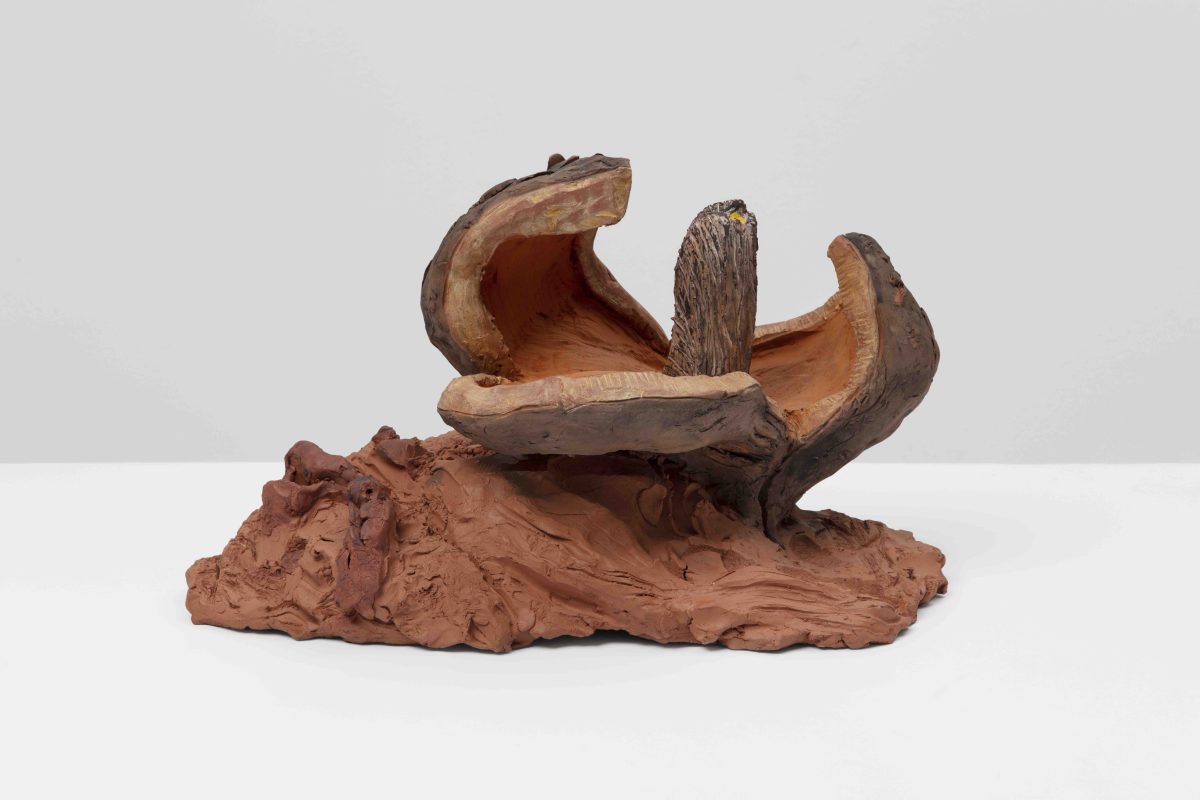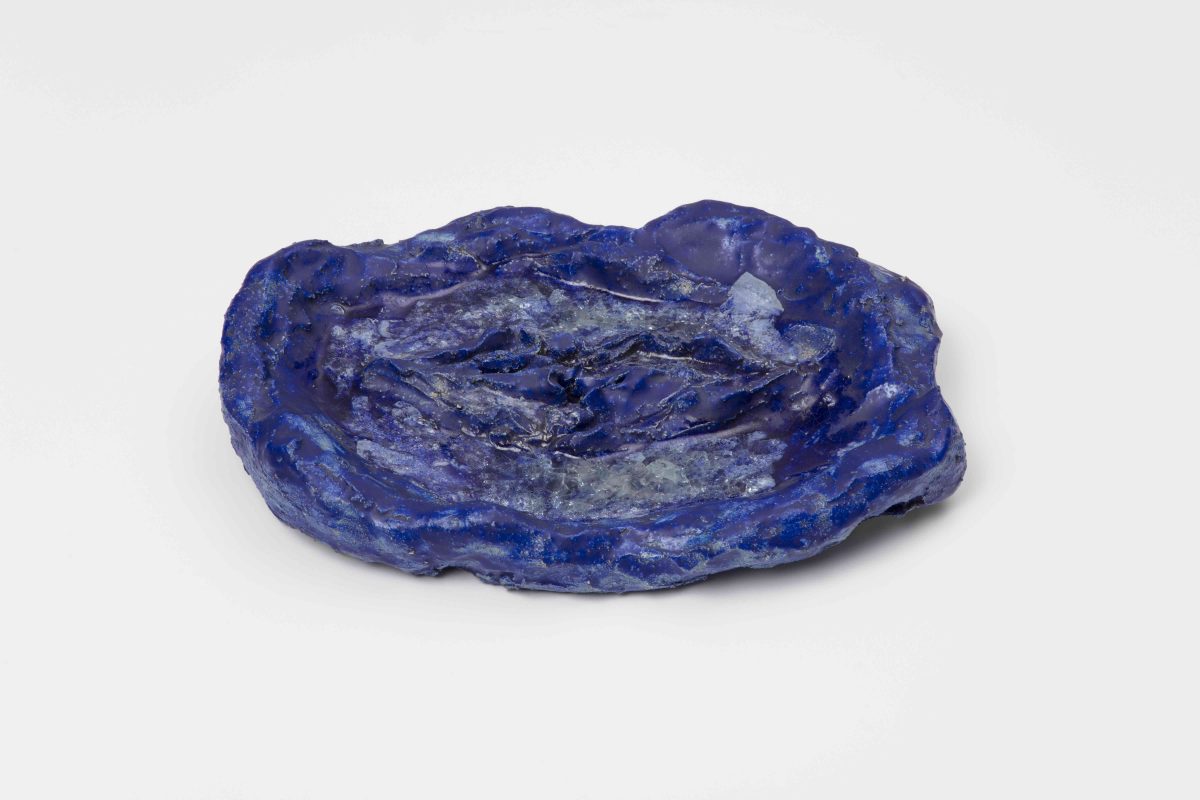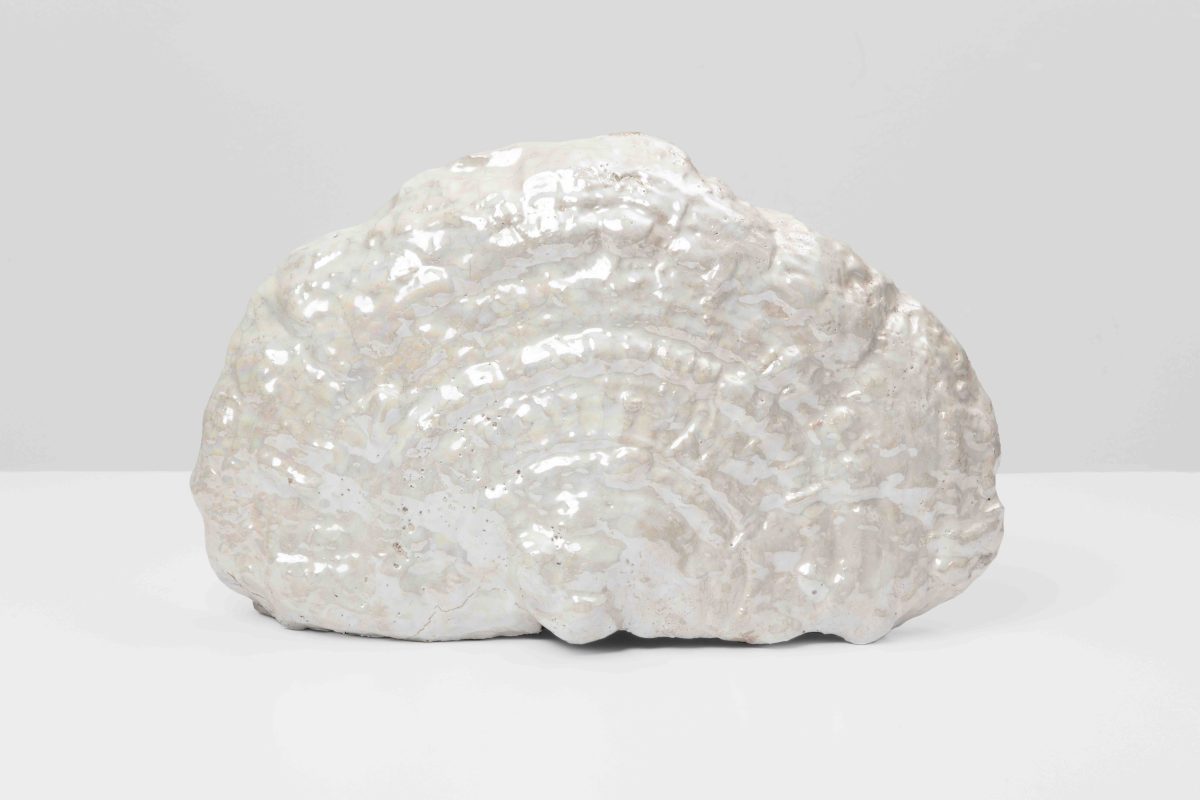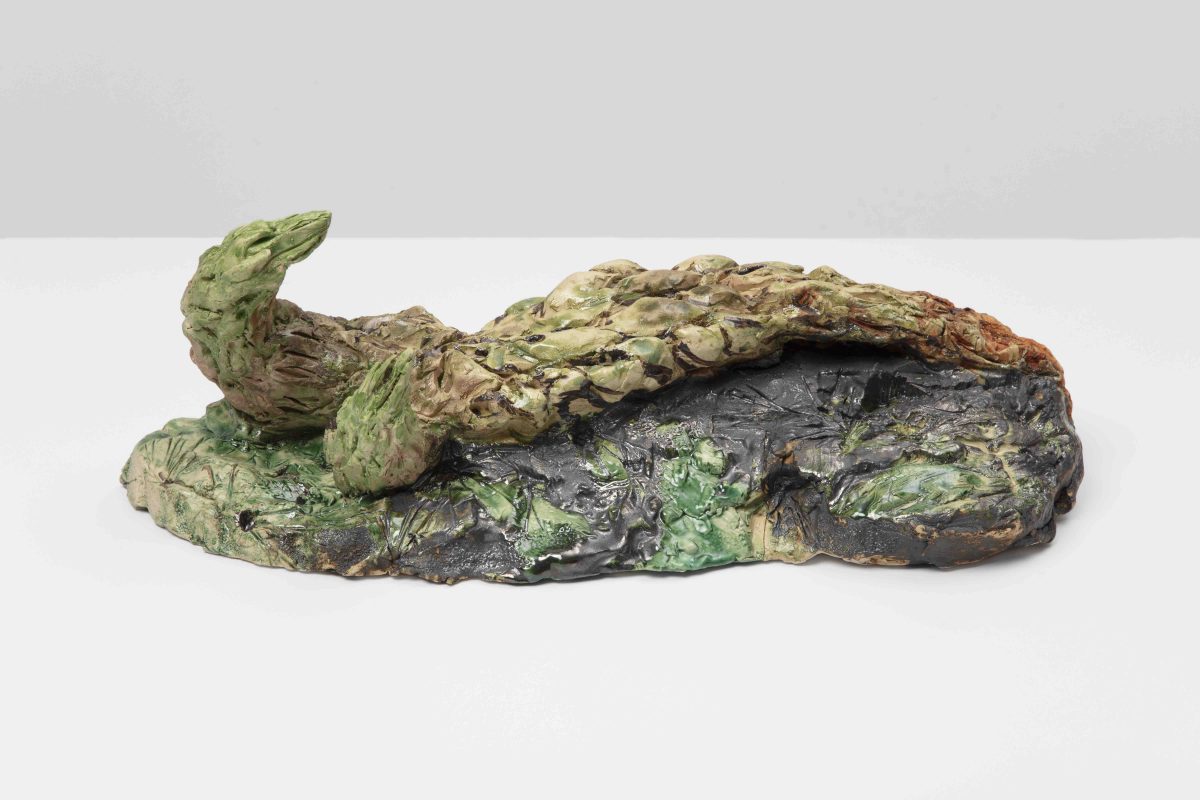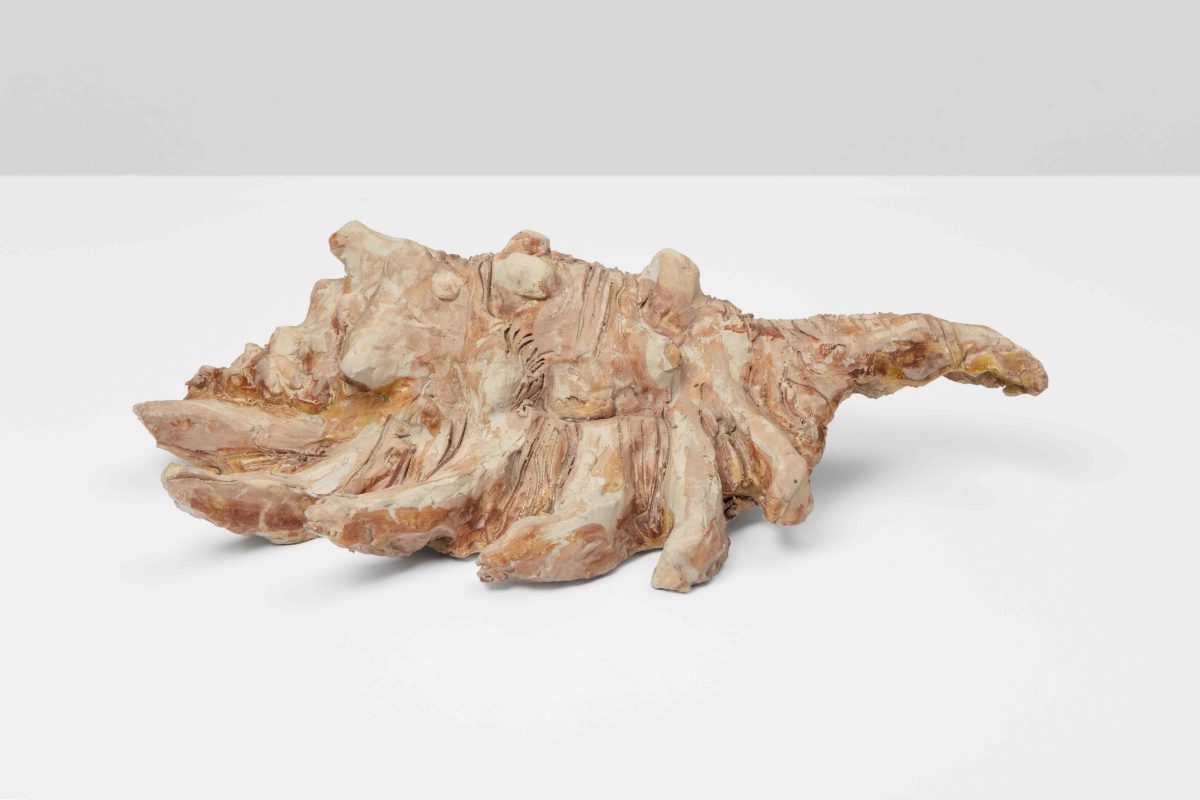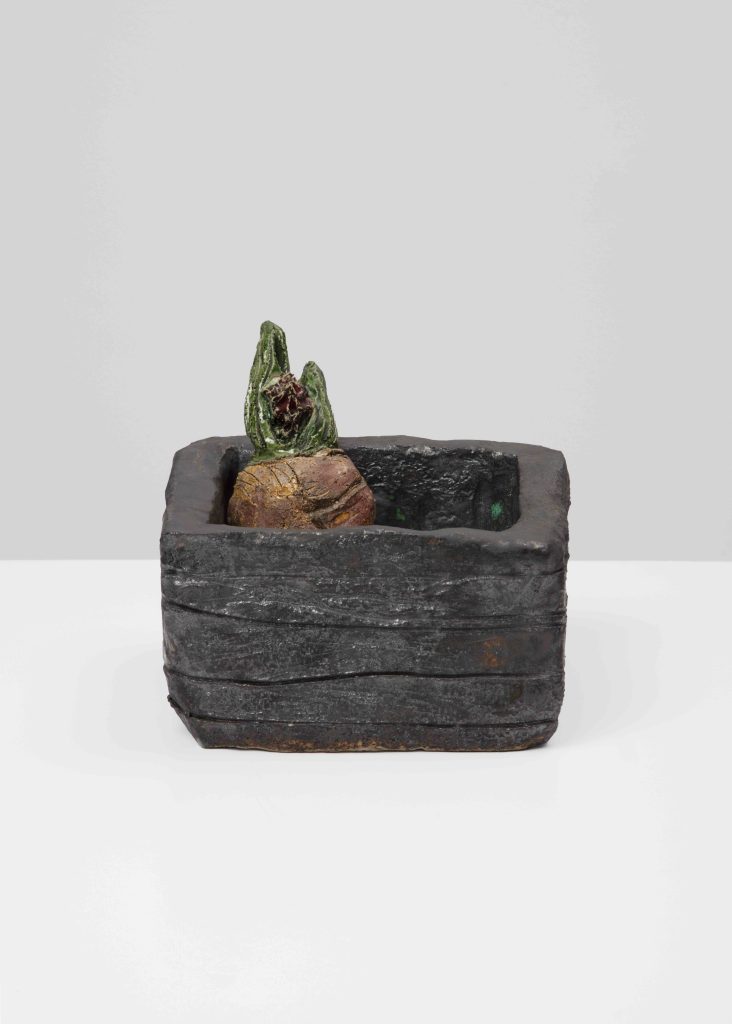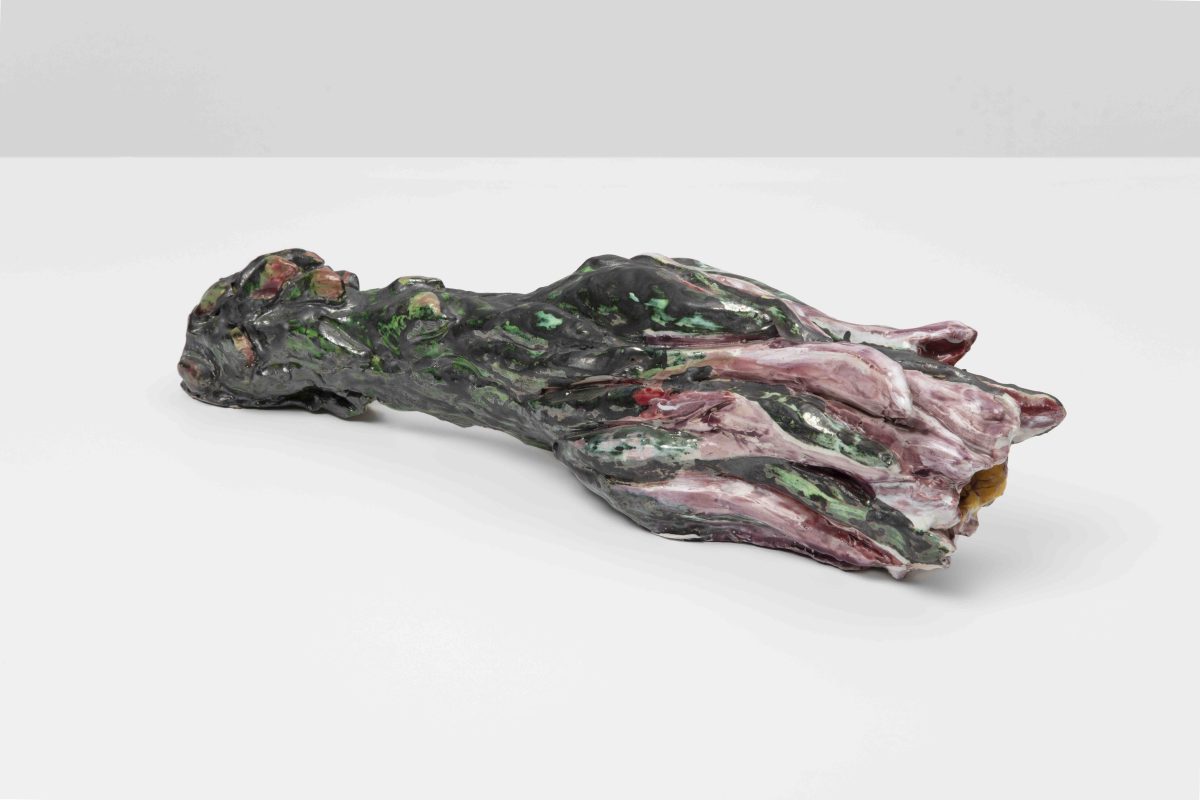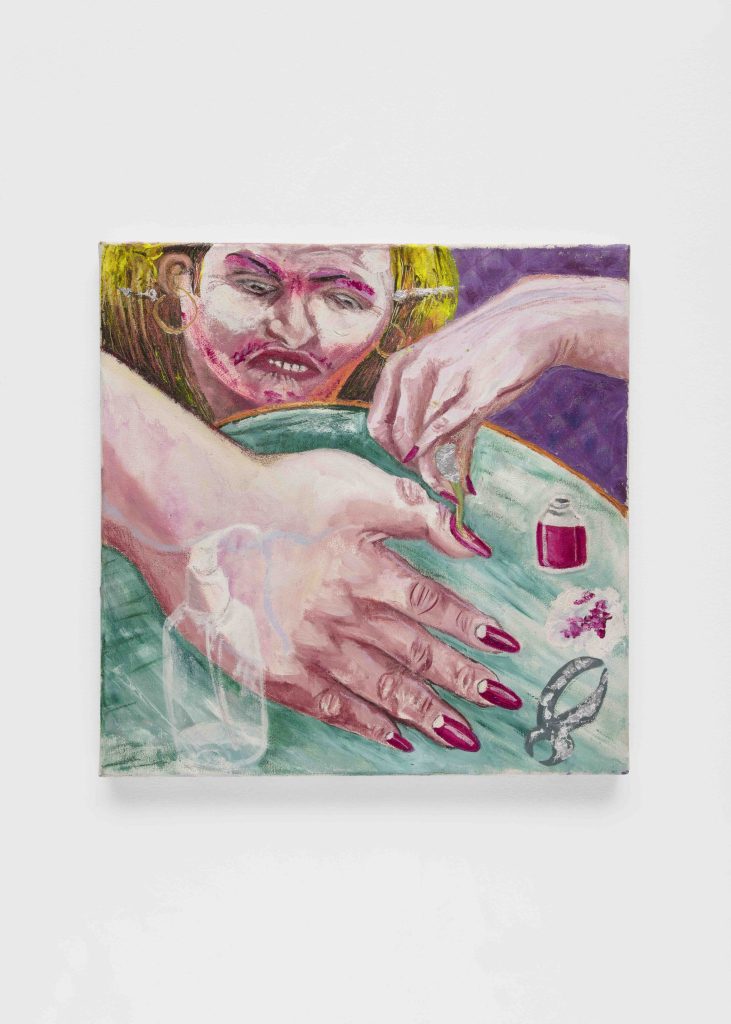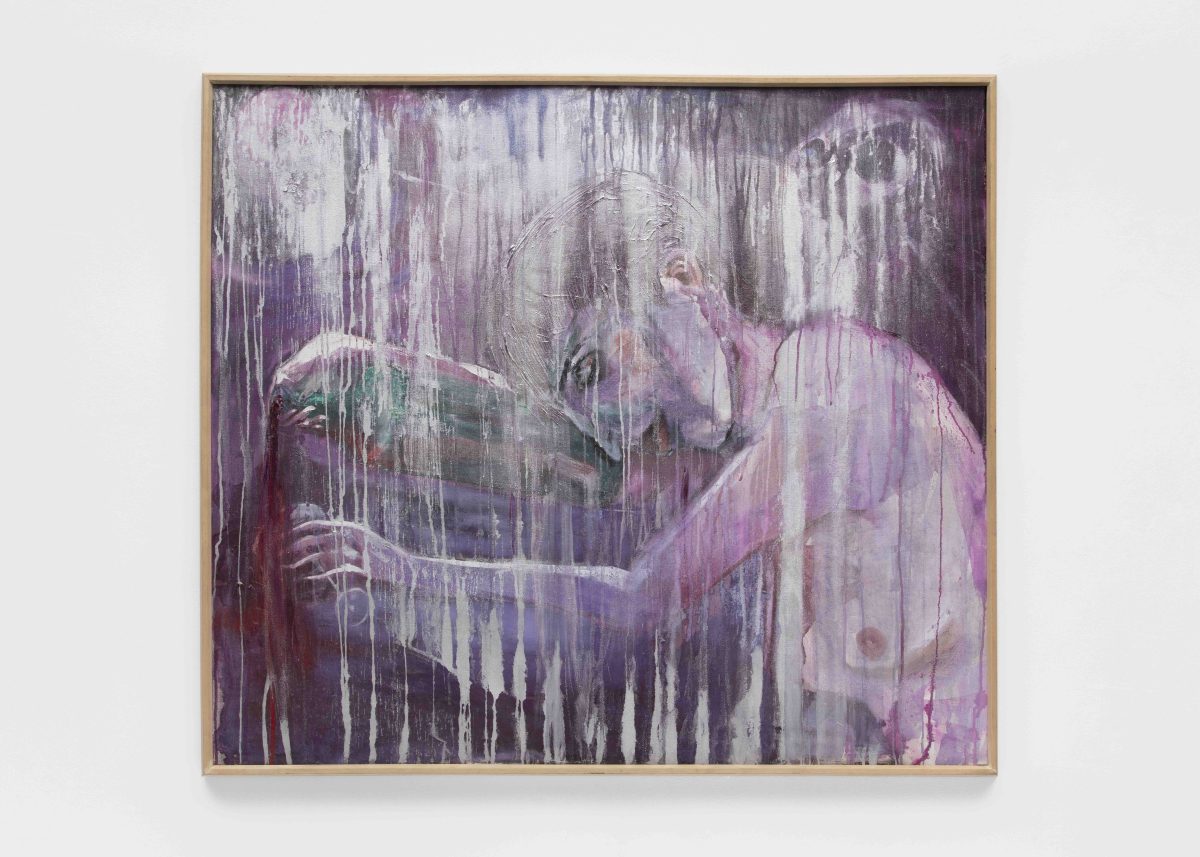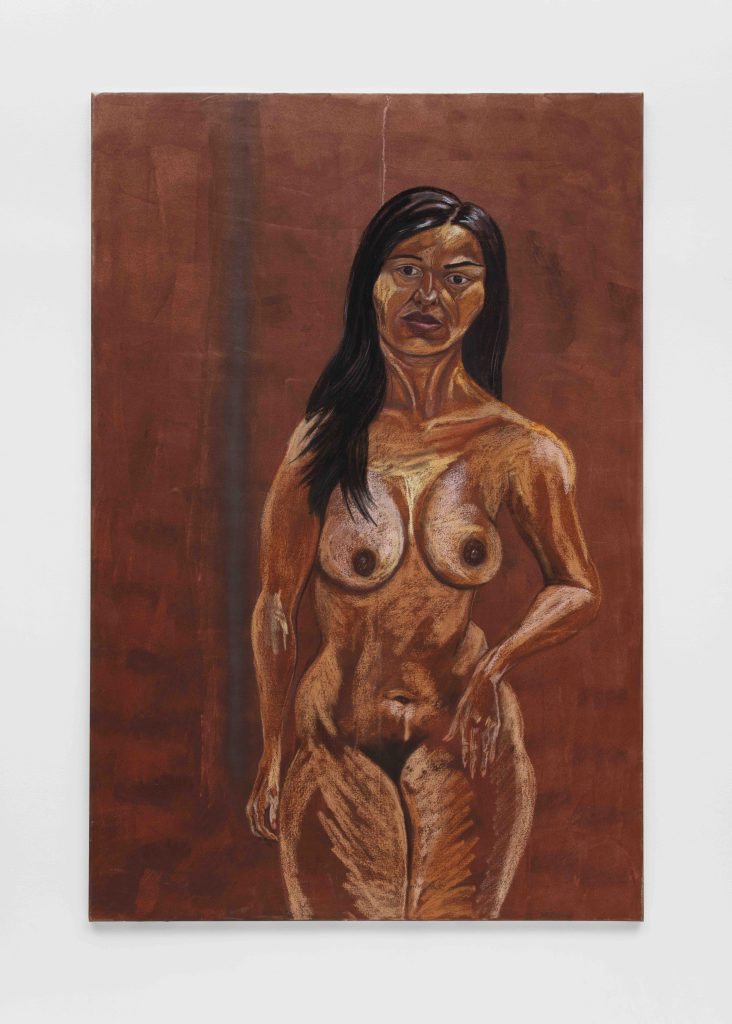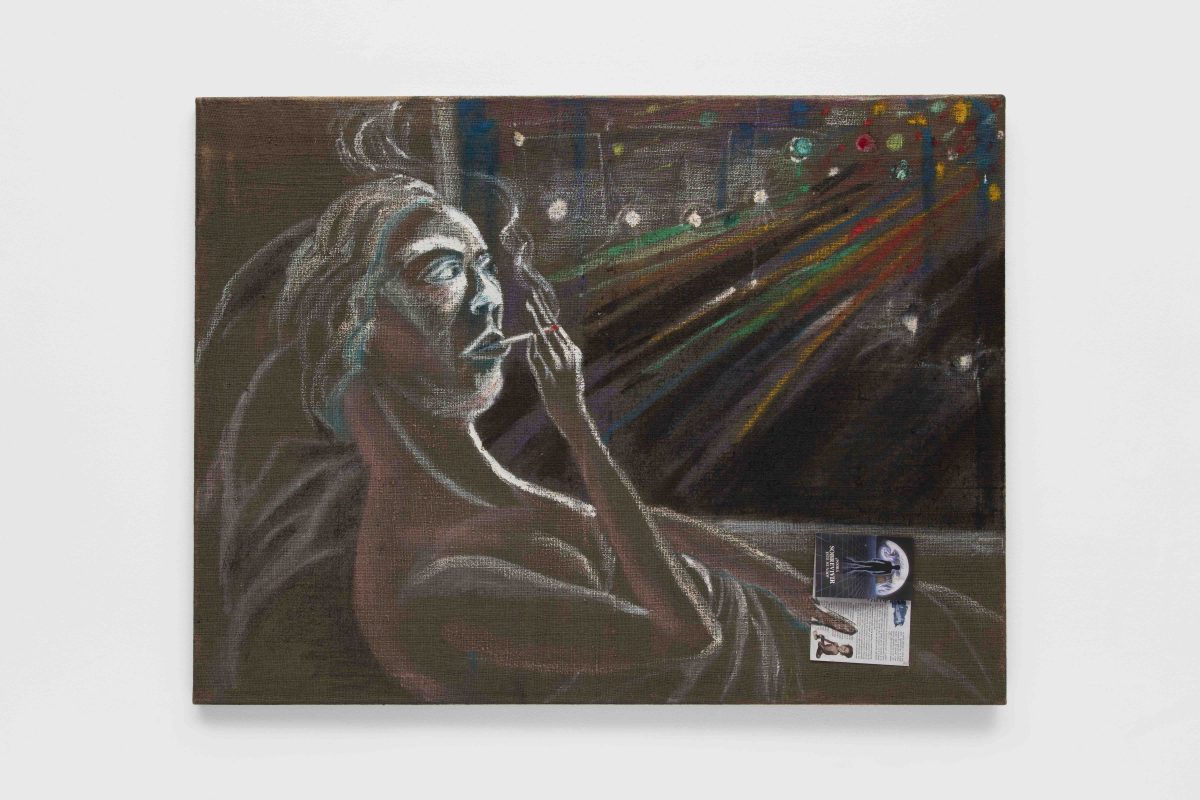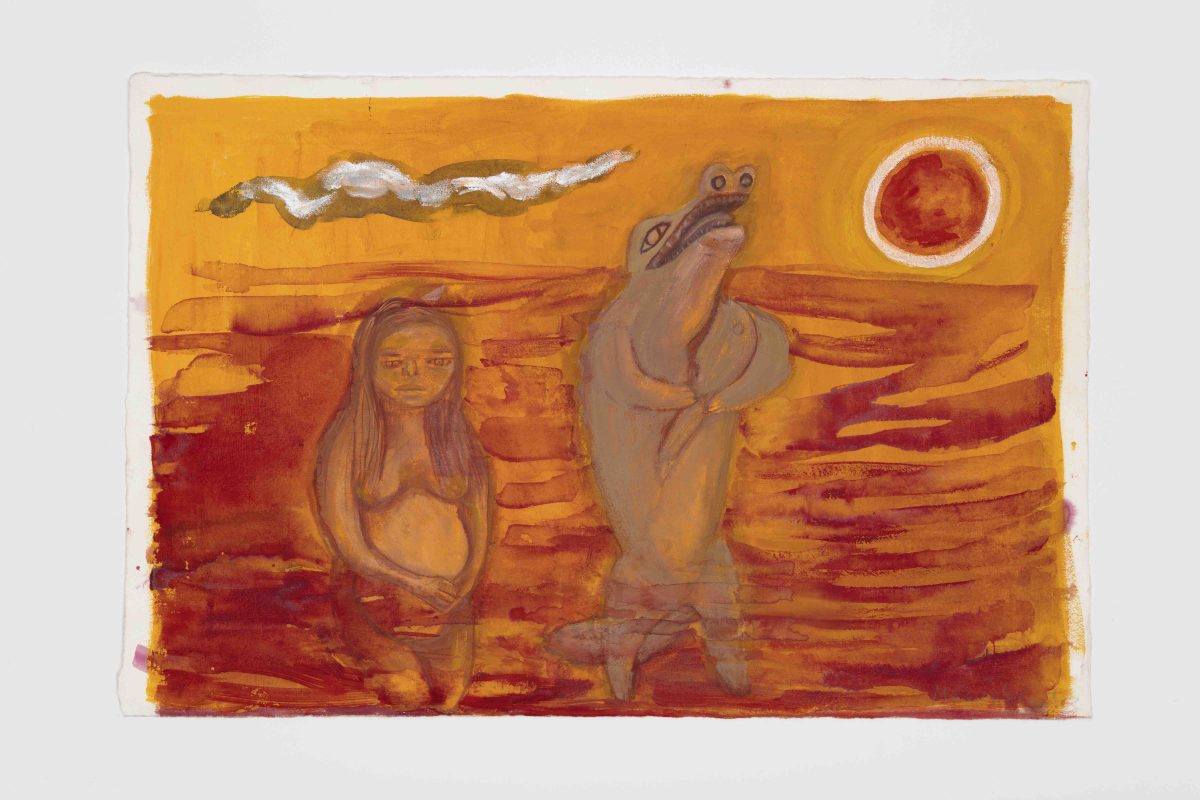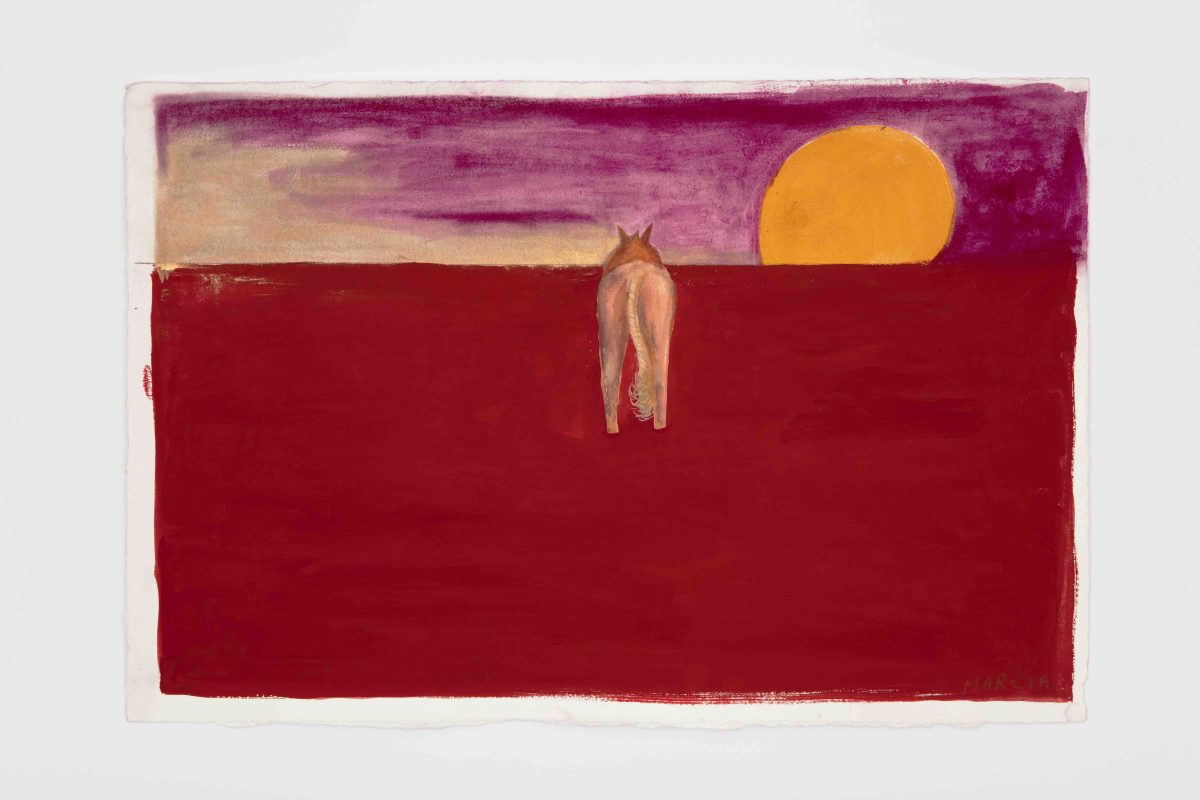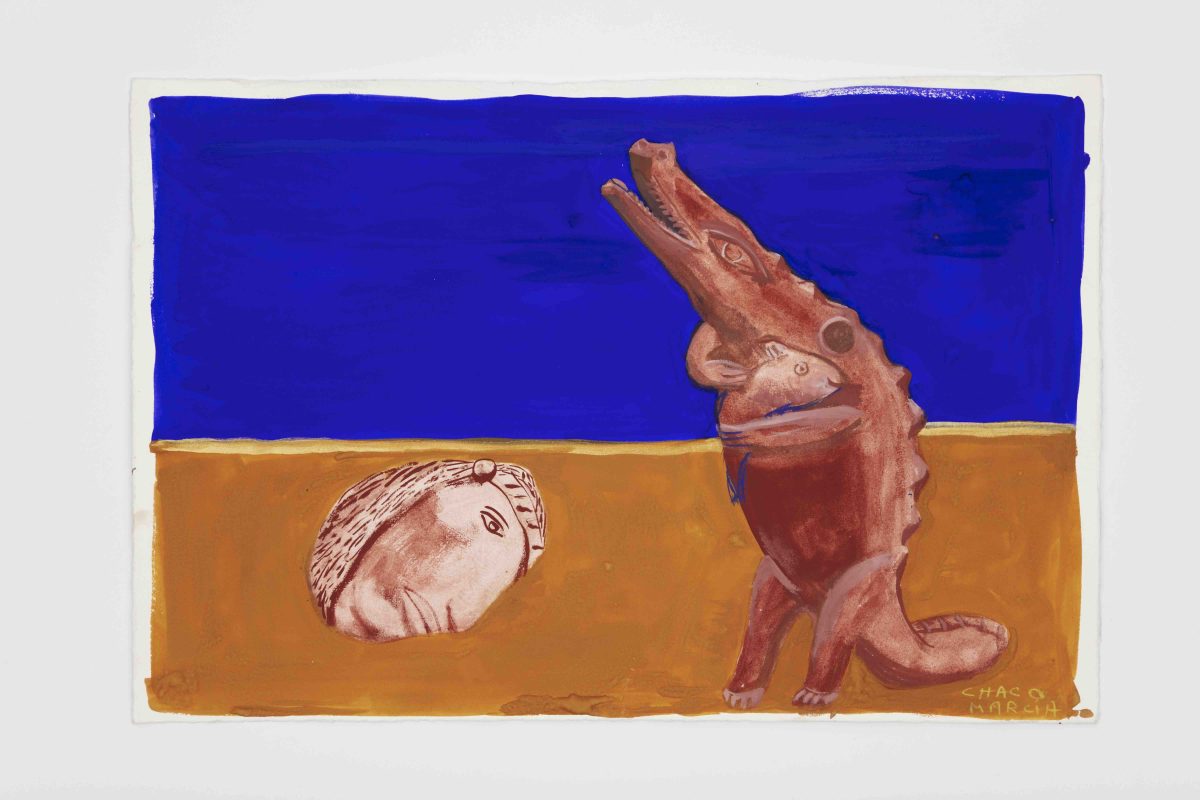
- This event has passed.
kaufmann repetto is pleased to present ‘Husks’, the gallery’s second exhibition with Marcia Schvartz. While the artist’s first presentation with kaufmann repetto in 2021 took a retrospective approach to her nearly five-decade career, this exhibition debuts a series of ceramics —a medium she has been working with for over twenty years— paired with paintings.
Recognized for her recurrent focus on the female figure, which she represents in a radically anti-patriarchal and decolonial manner, Schvartz recognizes (and depicts) that which is feminine in more than just the human form. Feminal energy is bound within and throughout ‘Pacha Mama,’ or Mother Earth, represented both in forms of ripe fertility —such as in flowers and fruiting bodies— but also in the remnants of fecund forms, as seen in vacated shells and discarded husks. The ceramic sculptures presented in the gallery portray flowers, cacti, fruits, and vegetables, alongside the residuum of living organisms much like dried seed pods and crustaceous shells, as in Un caracol como pie or Cáscara. Cáscara, a noun roughly translated in English to “husk” is a multi-faceted word in Latin languages, embodying not only a shell (one which could belong to animal or plant), but also relating to the verb, to husk (or “cascar”), which is to shed, shuck, peel, break, or crack, to open, discard, and reveal something new by leaving something old or used behind. To husk (cascar) is to forcefully alter the state of an object, to break it open or pull it apart, in order to obtain its desired core (such as, to access its fruit or nutrient). The analogy here is between the female body and the ways in which it is attacked, accessed, and addressed by contemporary society.
Schvartz’ depictions on the biologically female body avoid the typical feminine tropes such as softness, grace and seduction, trading them in for something unhewn, cracked, even broke open or apart. This perspective emphasizes aging by the means of elasticity, whether it is representational of the body or mind, and with that, palpable mortality. Her flowers are no roses; they are gnarly, barbed, pickled plants that ooze with dew and nectar. This approach to flora is analogous to her figures, who throughout her work are often seen in positions or expressions that tilt between agony, ecstasy and exhaustion. The casting away of this particular husk, the humanistic skins of innocence and signs of imminent age, is a crash into reality.

